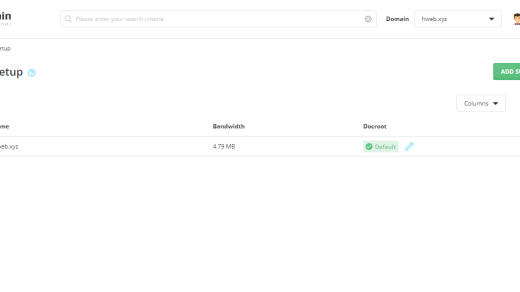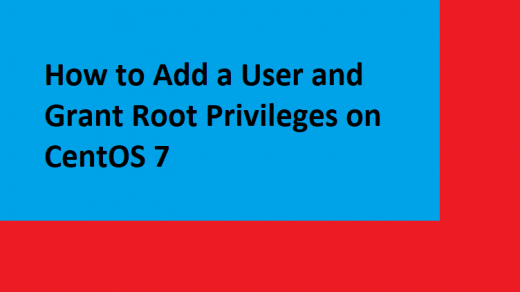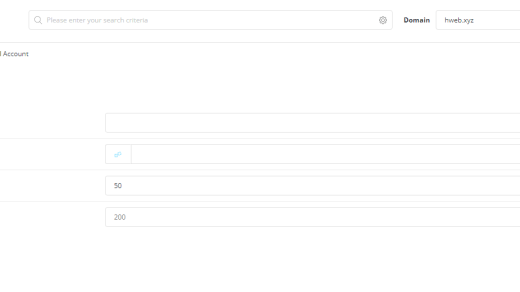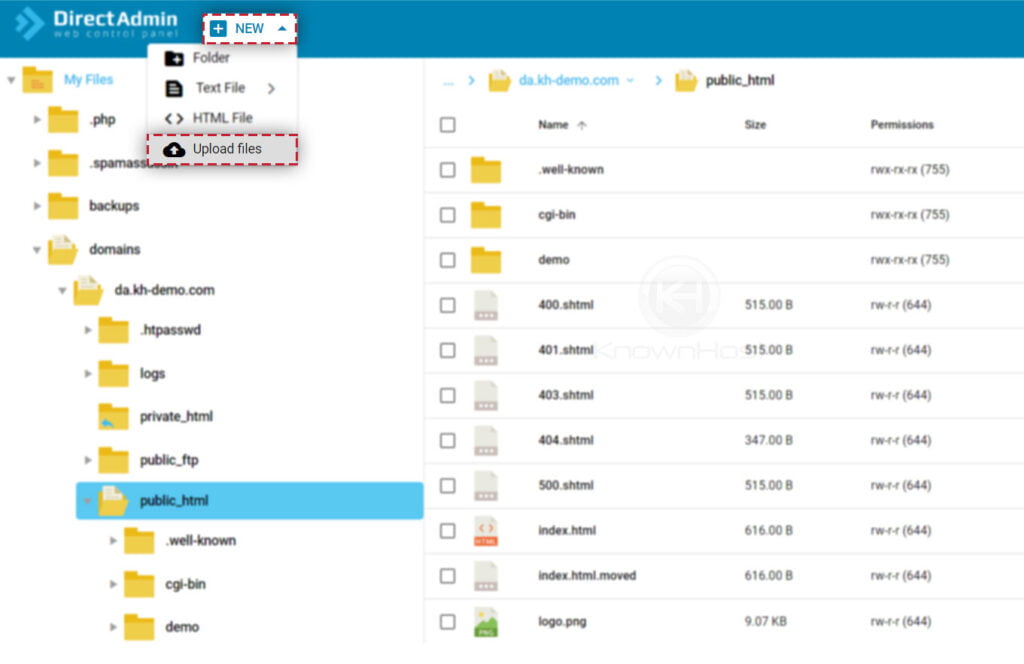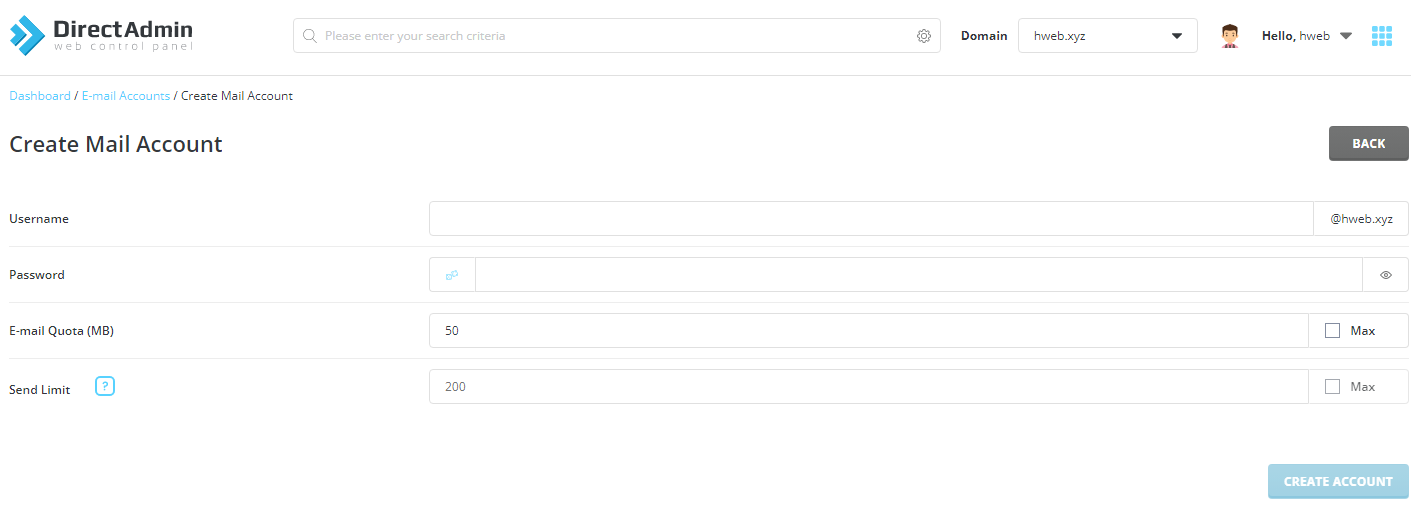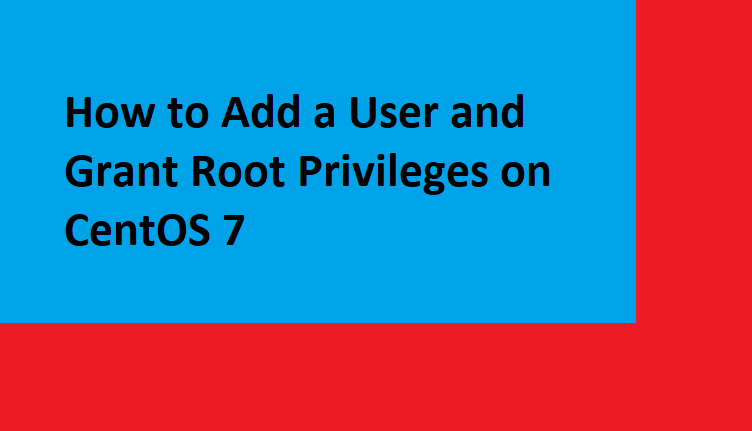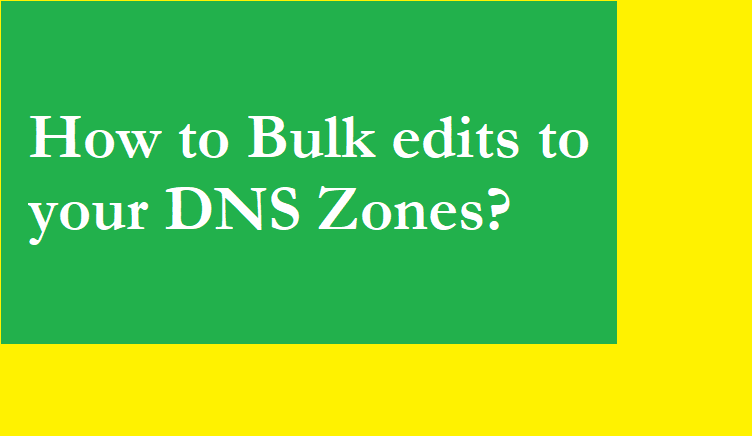This document provides information about domain names, editing HTML, and accessing the control panel. It serves as a basic introduction to web hosting and is intended for beginners. Experienced users may skip this document, except for the section entitled Accessing the Control Panel for the First Time.
Registering a Domain
Domains are a unique way to identify yourself on the Internet. There are two parts to a domain: the name and the extension. The name is the description of yourself or your site (for example, the name “dogfood” in dogfood.com). The extension represents the domain category. For example, the .com extension means “commercial,” .net means “network,” and so on. There are many extensions available today: .biz (business), .info (resource sites), .us (American sites), .ca (Canadian sites), to name a few. The “www” is automatically inserted by the web server that hosts your site and is not part of the domain name.
You cannot use a domain name until you register it. In addition, you cannot register a domain name that is owned by someone else. The registration process is fairly simple:
1. Decide on a domain name and extension.
2. Select a registrar and register your domain name.
3. Find a host for your domain name.
Deciding on a domain name and extension is difficult because most names are already taken, especially with the .com extension. We highly recommend nameboy.com, a free service that finds not-yet-taken domain names based on one or two words describing your site.
There are many registrars on the Internet. A simple search engine query for “domain name registration” will return hundreds, if not thousands of results. Be sure to choose a registrar that supports the extension you want (for example, not all registrars will sell the .cc extension). Comparison shopping is wise because registration fees can vary greatly between registrars. Domain names are leased, and the registration fee usually represents the cost for one year of ownership.
Once you have purchased a domain name you will need somewhere to host it. The domain name is just an address; that is, it points to files on a web server. Hosting companies provide web servers and this is where your web site is stored. A search engine query for “web hosting” will return thousands of results. To help you select a web host, we suggest reading the article entitled Choosing the Right Web Host for Your Site.
Your web hosting company is the best resource if you are still confused about domain names. Many hosts will assist you in the domain registration process and ensure that everything is configured properly.
Transferring a Domain
Transferring a domain can mean two things: switching the domain name to another registrar, or altering the domain record to make the domain point to a new host. We are concerned with the second definition. A domain has to be told which web host to direct visitors to, and this is done by changing the domain’s name server records.
For example, say you purchased a hosting account at hostpad.biz. They tell you to put their name servers in your domain record. These name servers might look like:
ns1.hostpad.biz (192.168.0.1)
ns2.hostpad.biz (192.168.0.2)
You will then visit your domain registrar’s home page, sign in, and edit your domain record. Each registrar is different, but there will be fields in your domain record called “name severs,” “primary/secondary name servers,” etc. The registrar may or may not ask for the IP address of the name servers (192.168.0.1 and 192.168.0.2 in this example). It takes 12-48 hours for the change to take effect.
Editing HTML
HTML, or hypertext markup language, is the language that tells web browsers how to display a page. For example, to bold text in HTML, you would start with the tag and end with . Anything between these tags will appear bold (visitors will not see the ). When someone visits www.yourdomain.com, they are actually accessing the index.html file in your main web site directory.
Editing HTML requires software specifically designed for the task. Examples include Microsoft FrontPage, HotDog Professional, and Macromedia Dreamweaver. There is also shareware and freeware HTML editors available from popular download sites such as download.com.
Even the best HTML editing software can be confusing for beginners. If you fall into this category, we suggest using an online site builder / HTML generator. No knowledge of HTML is required — online site builders ask you questions and then form a web site based on that information. Some site builders allow you to control the look of the site, insert graphics, scripts, etc. Most site builders are free but the more advanced ones charge an access fee. Some free site builders include:
https://www.uweb.ucsb.edu/generator/basic.php
http://www.3zweb.com/free/index2.htm
http://www.searchbliss.com/free_web_tools_html.htm
http://www.applelinks.com/tools/webpage.shtml
Accessing the Control Panel for the First Time
There are several ways to access the control panel:
https://www.yourdomain.com:2222 You can access the control panel through any domain or subdomain by putting :2222 after the address.
https://www.yourdomain.com/config You can access the control panel by adding /config to your domain or subdomain address.
https://192.168.0.1:2222 or https://192.168.0.1/config You can access the control panel through any IP address allocated to the server. This is useful when your domain transfer has not yet propagated.
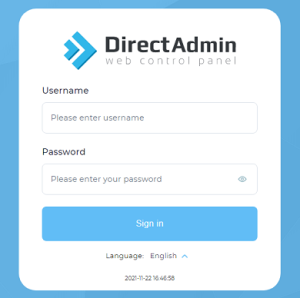
A window (similar to the one pictured on the right) will appear. Enter your username and password. Once signed into the control panel you should do two things.
First, click on the “Message System” link at the top-right of the page. Important messages about your account may come through the message system, so we recommend that you enter your e-mail address at the bottom of the screen and check the checkbox. If you do this, the control panel will e-mail you when a message comes in.
Second, return to the main menu and click on the “Statistics / Logs” icon. About halfway down the screen there will be a box to enter your e-mail address. Confirm that the e-mail address in the box is accurate. If not, change it and click on the “Save” button. It is important to have a valid e-mail address in this box because the control panel will e-mail you whenever your account is close to going over its bandwidth limit.
Changing Your Password
To change your password, click on the button located at the top-right corner of the screen. You will be asked to enter your current password and then your new password twice. Click the “Submit” button to confirm and save. The control panel will reject your password if it is too short or contains inappropriate characters.
Important note: This feature only changes the password for your username. Other e-mail accounts, databases, FTP accounts, etc. will not be affected by the password change.
Signing Out
To sign out of the control panel, click on the button. You will be taken to a screen confirming that you have signed out successfully. Click the the link to sign back in.
Important note: Many browsers keep your control panel session in memory even after you sign out. If you are not the only one that uses your computer, then be sure to close all running copies of your browser before leaving your workstation. This will clear the browser’s memory and make it impossible to sign into the control panel without the correct password.
Need more help?
Please contact us for more assistance, or visit the DirectAdmin support forum at https://forum.directadmin.com.

